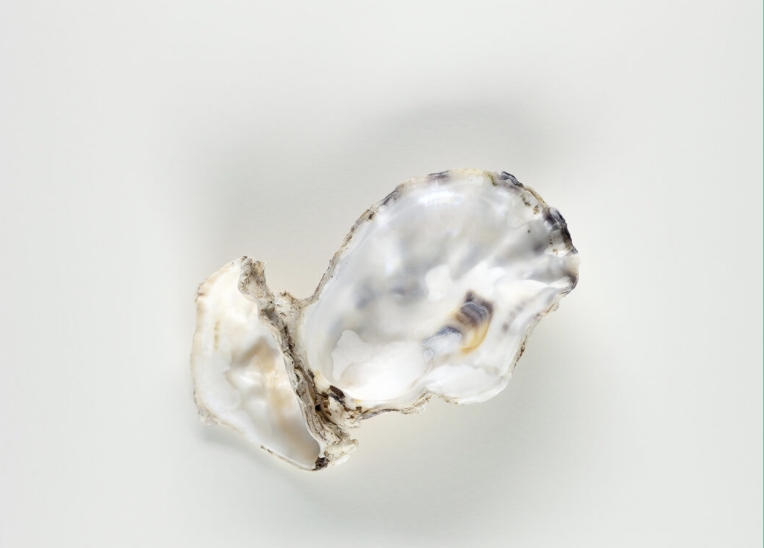The word “oyster” is a general term for bivalve molluscs that live in the sea. When they grow in the wild, they cement themselves to a chosen substrate for their entire lives — typically, the shell of another oyster. Oyster reefs are bustling ecosystems that prevent erosion, purify seawater, and provide a habitat for hundreds of other species. In commercial oyster farming, attachment is prevented to ensure that the final product is an individual, separate animal.
The exhibition at Hippolyte Studio delves into the shapes and attachment methods of the Pacific oysters through photography. The Pacific oyster is a resilient and fast-growing species originally from the Northwest Pacific Ocean, now cultivated as an imported species worldwide. Pacific oysters account for approximately 95% of global oyster production. The shells captured for the exhibition belonged to oysters that had strayed from farms and were rewilded in new environments. These shells were collected from the vicinity of oyster farms in Brittany, France, and along the western coast of Sweden, where the Pacific oyster thrives as an invasive species.
Harriina Räinä (b. 1989, Kemi) is a research-oriented visual artist based on Harakka Island in Helsinki. Räinä’s artistic interests encompass corporeality, the dynamics of perception, and the category of the animal, along with related questions. She completed her Master’s in Fine Arts at the University of the Arts, Helsinki, in 2019. The Volatile Shells project previously included a working period and open studio event at the Cité des Arts residency in Paris, France, in 2022 and an exhibition at Titanik’s gallery in Turku in 2023.
The artist’s work has been supported by the Olga and Vilho Linnamo Foundation. The exhibition at Hippolyte Studio has been supported by the Arts Promotion Centre Finland and the Finnish Art Society.




